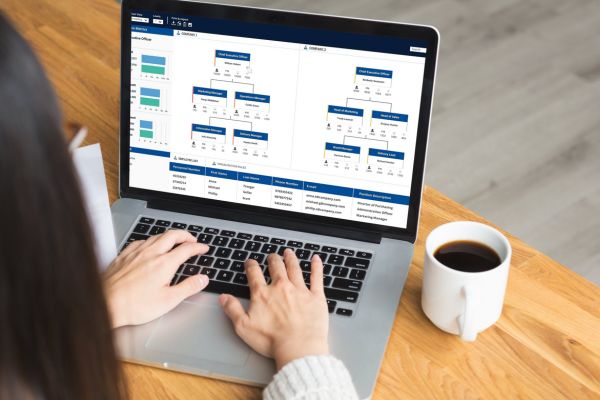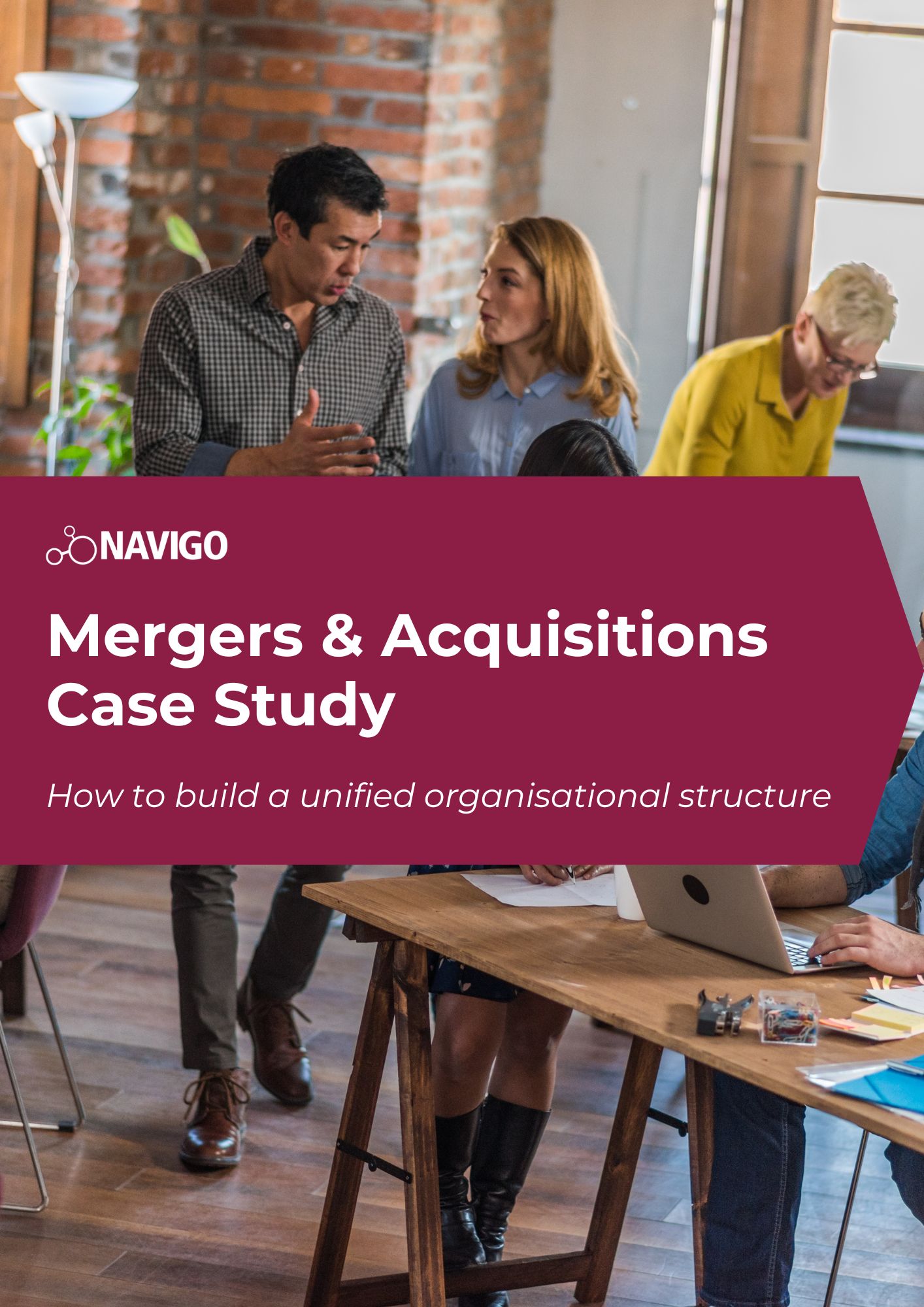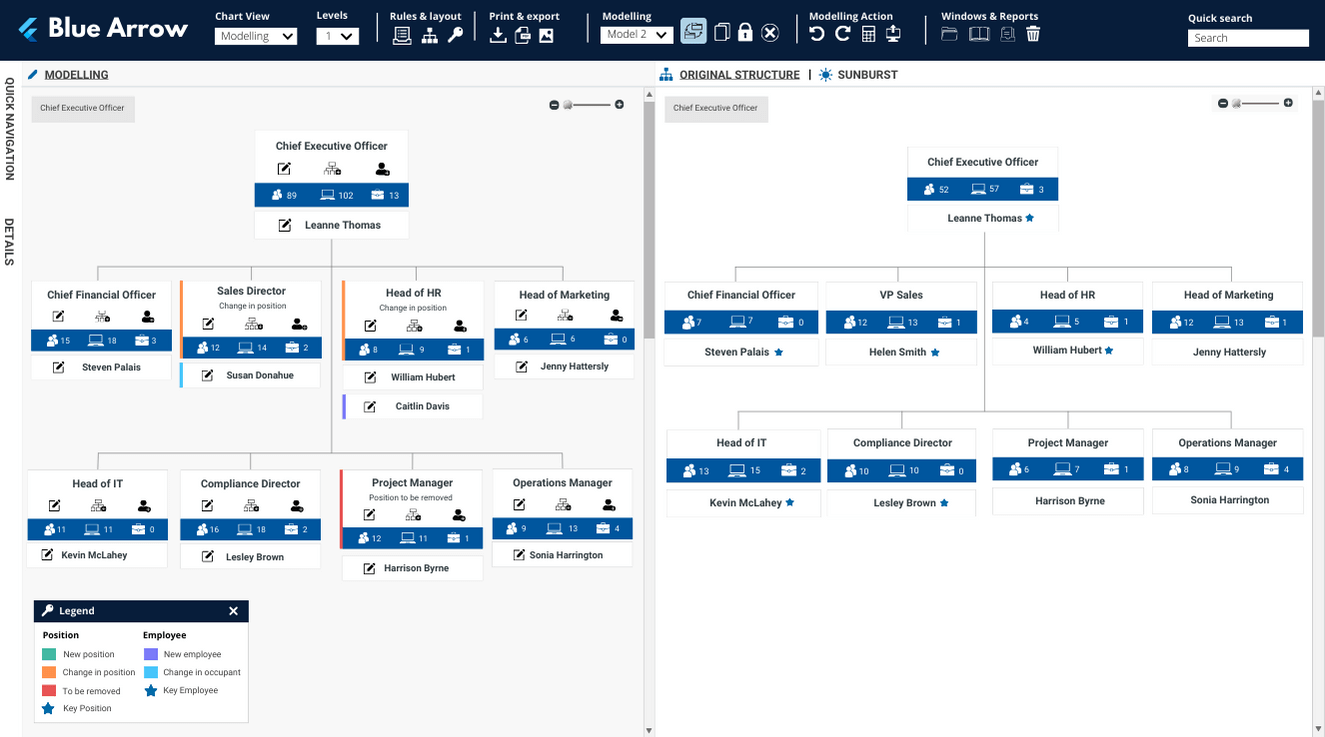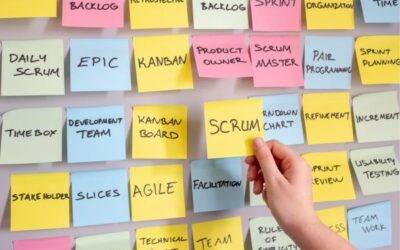Mergers and acquisitions project scope
Managing mergers and acquisitions can be a complex project. Integrating the culture, processes and people of the organisations involved raises a lot of issues and requires robust planning and processes.
This is where visualising the structures of both organisations becomes important. It provides a complete view of the positions, responsibilities, and reporting lines making it easier for decision-makers to create informed strategies and anticipate roadblocks.
This case study explores how Navigo’s org design platform, org.manager, helped visualise the merger of two companies with different data models and created a single hierarchical view of the newly created entity.
To gain a deeper understanding of this topic, you can read an article by Forbes on M&A strategies and their impact on organisational growth here.
Data Overview
The project required integrating two different payroll systems. This added an extra layer of complexity to the mergers and acquisitions process:
- Managing two separate data feeds with different identity providers (IDPs)
- Adding the results of scenario modelling to keep the org chart up-to-date
To address these data complexities, a dummy record was created which connected the continually updated CSV data files to create three structures:
- First structure – Existing Company A
- Second structure – Existing Company B
- Third structure – New Entity
To further streamline the process, daily changes resulting from the simulation were consolidated into a CSV file. This file was then uploaded to the SFTP server, either updating the existing org chart or generating a new one (as part of the mergers and acquisitions strategy).
Key Challenge
The primary challenge wasn’t dealing with the process or data complexities, but understanding the different stakeholders involved and their decision-making process.
The Navigo team was successfully able to bring the stakeholders together by providing services to support the mapping, examination and visualisation of the merger, helping them to make data-informed decisions using an org design tool.
The Solution
org.manager, the leading org design tool in Australia, provided a comprehensive solution for visualising and managing the new position hierarchy.
Key benefits for the team included:
- Workforce modelling: Enables stakeholders to create multiple what-if scenarios and see the impact in real-time with a change summary report. A mapping table was created that defined their hierarchy (departments, positions, business units) to create the rolled up view of the merged company and create a usable export.
- Drag-and-drop interface: Workforce models were easily created and edited via drag-and-drop without affecting their source of truth data. To maintain data integrity, editing or creating new objects was able to be locked when needed.
- Dashboard with FTE data: The dashboard provided insights into the FTE data, this allowed stakeholders to monitor the workforce distribution across the newly merged entity.
- Visual representation: Visualisation rules and colour codes were deployed to distinguish between the two original companies, ensuring clarity within the mergers and acquisitions context.
Below is an example illustrating the modelling capability in play for the merging of two companies:
Implementation
The configuration took approximately 35 hours and was primarily focused on setting up the data integration, backend processes and initial visualisation. The mergers and acquisitions project was executed in two phases:
- Phase 1 – Getting a simplified view of the employee hierarchy.
- Phase 2 – Creating a new position structure with more functionality to add/edit positions.
Test drive a workforce modelling tool
See how our advanced workforce modelling platform, org.manager, will elevate how you work throughout the mergers and acquisitions process. From interactive org charts to advanced HR dashboards, we have a portfolio of workforce templates that will ‘wow’ your entire team.
Otherwise, if you’d like a walk through of what our tools can do for you, book a meeting with one of our workforce specialists.
BONUS: The HR survival guide to mergers and acquisitions
1. Know your role
Most M&A deals are made in the boardroom. C-level executives see an opportunity to expand market share or plug a hole in the production process, and then they pull the trigger. But the success of an M&A transaction is all about handling the aftermath.
That’s when HR steps in. The M&A process can be broken down into four phases: Strategy and targeting, valuation and due diligence, integration planning and implementation. HR’s presence is greatest during the final two stages.
That said, HR should get in on the act as soon as possible. Time is of the essence, as missed business opportunities and disruptions should be kept to a minimum.
2. Know what you’re up against
Research varies on the success of M&A deals over the last 20 years, with some studies putting failure rates at as high as 90%. But at best, companies undergoing M&A are flipping a coin – the difference between heads and tails is the amount of organisational planning that goes into the combination of workforces.
Some of the biggest reasons for failure include:
• Waning financial performance
• Culture clashes
• Losing key players
• A decline in production
• Ineffective change management
3. Know your strategy
There’s more than one way to execute an M&A transaction.
The chosen strategy generally depends on the degree of integration the acquiring company or merging companies decide on. This strategy will then dictate the breadth and depth of the implementation process.
If the companies involved are interested only in combining their efforts to achieve certain financial goals, minimal integration is necessary. At the other end of the spectrum is the complete and total combination of both staffs, creating one entity with a collective culture and common HR policies.
4. Look at the big picture
Combining separate workforces is a huge undertaking. There’s a mountain of information to pore through—perhaps two mountains—and it’s your job to make sense of it all. That’s where a good org charting solution comes in.
An effective org charting program gives HR strategists the ability to visualise, plan and model the new organisational structure. This helps identify redundancies at all levels of the business and pinpoint key personnel, ensuring that the emerging company is the strongest it can be moving forward.
Additionally, filling your org chart with pertinent workforce metrics like salary, headcount and performance rating drives people decisions that make the integration process more manageable. And don’t worry about getting it perfect the first time. Like anything else in the business world, your org chart will change – often.
5. Establish new leadership
Going through an M&A transaction can be a confusing time for employees, no matter which “side” they’re on. By formulating and communicating the new management structure as soon as possible, your workers will know that an integration plan is already being executed.
If employees don’t know who’s calling the post-M&A shots, top talent may wander or employees may make up their own version of the new reality. Create a sense of stability by telling it like it is.
6. Keep your eyes on the prize
Remember: The reason the merger or acquisition took place was to maximise the value of the new organisation’s products and/or services. The financial strategy behind the deal was hashed out well before it took place, but the staff has to be able to carry out that strategy.
HR can add a lot of value to the department during an M&A transaction by creating and executing a solid integration plan. Doing so gives the new organisation its best shot at business success, which is, after all, the whole point.







0 Comments